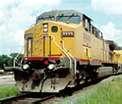
Major Safety Changes Coming for Railroads
The Railroad Safety Improvement Act of 2008, signed into law Oct. 16 by President Bush, accomplishes a long-sought goal of the National Transportation Safety Board, Acting NTSB Chairman Mark Rosenker said. The bill (HR 2095) authorizes appropriations for DOT's railroad safety and passenger rail activities and requires Class 1 railroads and passenger railroads to install the technology by the end of 2015. It also funds Amtrak in fiscal years 2009-2013.
"For 30 years, the NTSB has been calling for development and installation of an automatic system that would protect passengers, crew members, and communities from the dangers of collisions or over-speed derailments," Rosenker said. "Such a system, called Positive Train Control (PTC), will now be mandated for Class 1 railroads and passenger railroads for installation by the end of 2015. An implementation plan is due in 18 months. We continue to see accidents every year -- such as last month's commuter rail collision near Los Angeles -- that could be prevented with such a system. The new law also addresses many train crew fatigue issues that the Safety Board has examined over many years, including hours of service, so-called 'limbo time,' and work schedules." Railroads would have to limit shifts to 12 hours and give workers at least 10 consecutive hours off in a 24-hour period.
Yet another step forward in the law is its requirement that train crews have emergency escape breathing apparatus in locomotives when freight trains are carrying hazardous materials that could pose a threat of inhalation damage. It also strengthens track inspection requirements, NTSB said.
The law designates NTSB as the primary agency for coordinating federal resources to assist families of passengers involved in rail passenger accidents, just as the board does in aviation accidents. "I congratulate everyone in the legislative and executive branches of our federal government who had a hand in passage of this landmark legislation," Roseker said. "I urge everyone to begin implementing these improvements as soon as possible so that we can begin to remove some of these items from our Most Wanted list in the not-too-distant future."